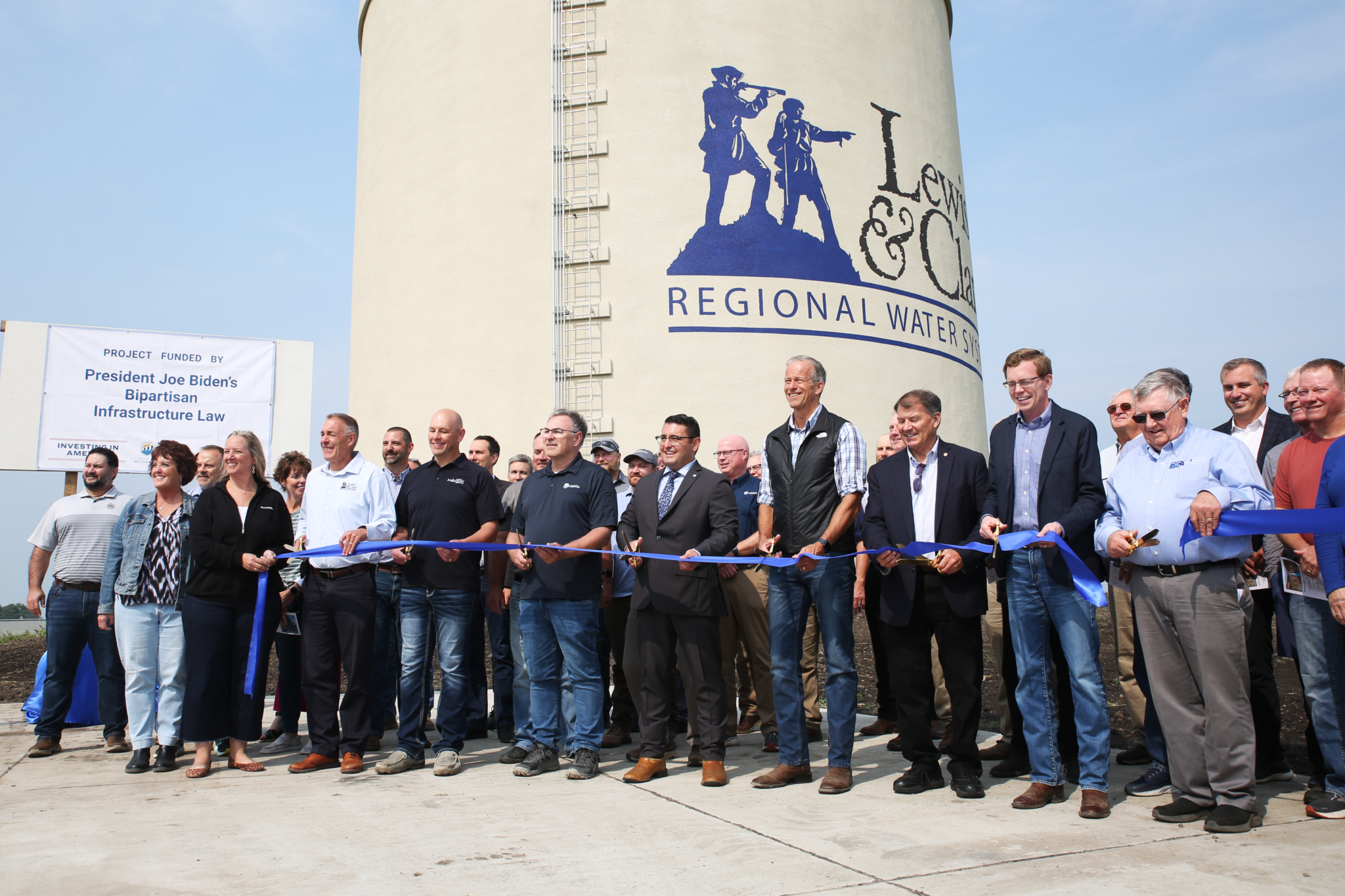
Makenzie Huber/South Dakota Searchlight
MADISON — After waiting nearly 35 years, Madison is the last South Dakota city to connect to the tri-state Lewis and Clark Regional Water System. Local leaders, South Dakota’s three congressmen and economic leaders gathered to celebrate the city’s connection on Wednesday.
Madison’s roughly 6,000 residents tapped into the system earlier this month.
The pipeline delivering the water covers 310 miles and spans southeastern South Dakota, southwestern Minnesota and northwestern Iowa. The roughly $700 million water system serves about 350,000 people.
The connection means better water quality in the city and economic development, because it increases water capacity, especially for agriculture surrounding Madison, said state Sen. Casey Crabtree, R-Madison.
“This just means a higher capacity for growth that otherwise wouldn’t exist,” Crabtree said.
South Dakota Sen. Mike Rounds told attendees of Thursday’s celebration that “water development is economic development.” He compared the Lewis and Clark system to the expansion of electricity and broadband in rural parts of the country.

“We’re continuing to make it so that young people want to come back in and stay in the rural parts of our country — not just in the communities themselves but in the ag areas as well,” Rounds said. “It would not happen if it wasn’t for this type of development across multiple states.”
The city will blend its existing water sources with pipeline water to ensure resiliency in supply during droughts and other disasters.

Sibley, Iowa, will be the last to connect to the pipeline. Lewis and Clark Executive Director Troy Larson expects to hook up to Sibley in the fall.
The final step in construction of the “base” water system is to build out a water treatment plant in Vermillion and reach a water capacity of 44.19 million gallons a day, Larson said.
The majority of the pipeline is funded through the federal government. It was supposed to be completed in 2016 but fell behind schedule because of poor funding, Larson said.
The pipeline is now planned to be completed in 2028, after receiving a $152.5 million boost from the 2021 Bipartisan Infrastructure Law. Bureau of Reclamation Deputy Commissioner Roque Sánchez represented the Biden administration at the celebration, touting the federal government’s role in aiding the project and other rural investments across the country.
None of South Dakota’s U.S. congressional delegates voted for the bill.
“While it took a long time because of federal funding to get where we are,” Larson said, “the last few years we’ve been sprinting to the finish line.”

Larson said Lewis and Clark started construction on the water system’s first expansion in 2022, which is expected to be completed in 2030 and expand water capacity to 60 million gallons a day. The nonprofit expects the second expansion will start shortly after to more than double the system’s capacity as the population grows.
The regional system has “paved the way” for similar water systems in the state and country, Larson said. Fledgling efforts in western, northern and eastern South Dakota are vying for Missouri River water for their communities.
It’s to be expected, since cities and rural water systems across the state are maximizing their groundwater sources and realize other states are looking to tap into the Missouri River, Larson said. South Dakotans want to get there first.
“The only source of really untapped, reliable water in the state is the Missouri River,” Larson said. “What we’re all waking up to is that we need to fully utilize this resource we have.”
